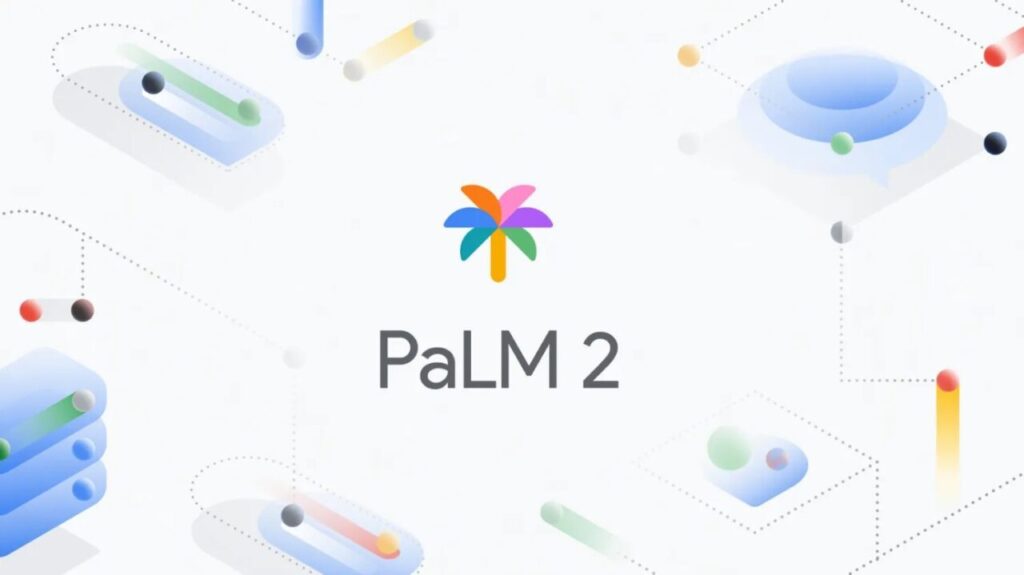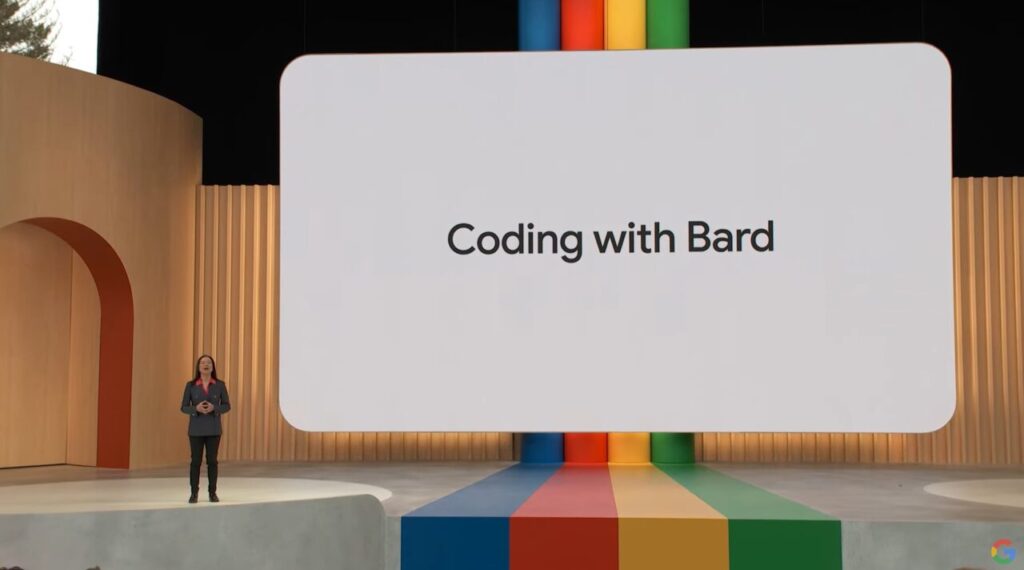Google’s AI Assistant, Bard, has made waves in the tech world with its impressive language processing and conversational skills. Recently expanding to over 180 countries, this cutting-edge chatbot is now more accessible than ever to users worldwide.
Powered by Google’s advanced LaMDA AI model and the new PaLM 2, Bard offers outstanding features such as improved language support and seamless integration with Google services.
Key Takeaways
- Google’s AI assistant, Bard, is now available in over 180 countries and territories worldwide, making it more accessible to users seeking cutting-edge AI technology.
- With enhanced language support and features like visual responses and integration with Google services, businesses can leverage Bard’s capabilities to improve customer experience, workflow optimization, image analysis and gain a competitive edge in new markets.
- Compared to other popular chatbots like OpenAI’s ChatGPT, Bard stands out for its multilingual support, ability to export code execution using Colab or Replit without copying the work – all while offering intuitive interface through seamless interactions that reflect natural conversation.
Understanding Google’s AI Assistant, Bard
Google’s AI assistant, Bard, is a generative AI chatbot that allows for natural language processing and conversation in over 180 countries.
Overview Of Bard And Its Features
Google’s AI Assistant, Bard, has quickly become a popular tool among users seeking help with various tasks. Powered by the company’s LaMDA AI model and enhanced by the newer PaLM 2, Bard boasts a wide array of features aimed at making life easier for individuals and businesses alike.
Bard’s ability to understand complex queries—thanks to its large language models (LLMs)—ensures that user interactions are seamless and efficient. With recent advancements in math and reasoning skills also brought forth by the PaLM 2 model family, Bard has only increased in versatility since its inception.
Additionally, visually-responsive answers cater to those who prefer visual aid over text-based responses.
Bard’s Success And Expansion To Over 180 Countries And Territories
Google’s AI Assistant, Bard, has achieved remarkable success and growth since its launch. The innovative tool is now available in over 180 countries and territories worldwide without any waitlist requirement – an impressive milestone that highlights its widespread appeal among users seeking the latest advancements in AI technology.
The global accessibility of Bard opens up immense opportunities for individuals and businesses alike by providing seamless communication across various sectors. It underscores Google’s commitment to staying ahead of the curve in AI development while empowering people on a global scale with cutting-edge technology.
By incorporating visual responses into its features through Google Lens integration, Bard continues to evolve rapidly, offering users an increasingly sophisticated experience backed by powerful large language models like PaLM 2.
Bard Is Now Even Smarter With The Larger PaLM 2 AI Model

Google’s AI Assistant, Bard, has undergone significant improvements with the integration of the new PaLM 2 AI Model. This cutting-edge model belongs to a family of foundational large language models that have been designed to excel in advanced math and reasoning skills while offering improved coding capabilities.
With the help of the PaLM 2 AI Model, Bard is transforming into an even smarter and more versatile AI assistant. For instance, software developers can now benefit from an export button for code execution in either Colab or Replit without having to copy-paste their work as before.
Furthermore, it won’t be long before Google Lens integration comes into play; this feature will empower users to incorporate photos and images directly in their prompts—leading to richer interactions between humans and this groundbreaking artificial intelligence tool.
Advantages Of Bard’s Global Expansion

Bard’s global expansion offers improved language support for better communication, increased accessibility to AI technology, and advantages for businesses in new markets.
Improved Language Support For Better Communication
One of the most significant advantages of Bard’s global expansion is its improved language support for better communication. With its launch in over 180 countries, Bard now supports multiple languages, including Japanese and Korean.
Users can now converse with Bard in their preferred language, making it easier for people who do not speak English as their first language to access AI technology.
This enhanced multilingual capability has numerous benefits for businesses looking to expand into new markets. Companies can use Bard’s translation services to communicate with potential customers in their native language effectively.
For instance, if a business is opening a new branch in Japan or Korea, they can engage local customers by chatting with them on Google Assistant mobile applications using voice commands or typing and receive instant replies without having any barrier due to lack of Language proficiency.
Increased Accessibility To AI Technology
The expansion of Google’s AI assistant, Bard, to over 180 countries brings with it the promise of increased accessibility to AI technology. With its advanced natural language processing and multilingual support, Bard can communicate with people around the globe in their preferred language.
This will allow individuals from all walks of life to interact easily with AI technology in a way that was previously difficult or impossible due to language barriers.
Moreover, developers who use Colab or Replit will benefit from an export button for code execution introduced on Bard allowing them access to this exciting technology without having particular hardware resources at their disposal.
Advantages For Businesses In New Markets
Expanding businesses can benefit from Bard’s global availability and language support, which provides several advantages, including:
- Improved customer experience: With Bard’s ability to communicate in multiple languages and provide quick and accurate responses, businesses can offer improved customer service and attract more international customers.
- Accessibility to AI technology: Businesses in new markets may not have access to advanced chatbot technology like Bard, but with its global expansion, they now have the opportunity to leverage AI for their operations.
- Workflow optimization: By using Bard’s integration with Google services like Gmail and Docs, businesses can streamline their workflow and save time by exporting responses directly to these tools.
- Image analysis: With Bard’s newly added feature of visual response capability, businesses can analyze images or photos quickly and easily.
- Competitive edge: By integrating with other service providers such as Kayak, OpenTable, ZipRecruiter, Instacart – businesses using Bard can gain a competitive advantage over their competitors.
Overall, Bard’s expansion to 180 countries can help businesses reach new audiences globally and improve their operations by leveraging advanced AI technology.
How Bard Compares To Other AI Chatbots
When compared to other AI chatbots like ChatGPT, Bard stands out due to its integration with Google services, wider language support, and visual response capabilities.
Comparison Of Bard And ChatGPT
In this section, we will compare the features and capabilities of Google’s Bard and OpenAI’s ChatGPT, both popular AI chatbots in the market.
| Features | Google’s Bard | OpenAI’s ChatGPT |
|---|---|---|
| AI Model | Powered by Google’s LaMDA and PaLM 2 AI models | Powered by OpenAI’s GPT-3.5 Turbo |
| Language Support | Supports multiple languages, including Japanese and Korean | Primarily supports English, with limited multilingual support |
| Visual Responses | Offers visual responses to queries | Lacks native visual response capabilities |
| Integration with Services | Integrates with Google services and plans to add Google Lens integration | Can be integrated with external services through API |
| Add-ons and Extensions | Add-ons available to extend Bard’s capabilities, partnering with various service providers | Extensions can be built by developers, but no official partnerships announced |
| Code Execution | Export button for code execution in either Colab or Replit | Requires using OpenAI API to execute code within applications |
User Preferences And Feedback
One of the essential factors in measuring an AI assistant’s effectiveness is user feedback and preferences. Since launching Bard, Google has received positive reviews from users worldwide.
Many appreciate its ability to understand natural language and produce relevant results quickly. Users have also praised Bard’s visual responses, which enable it to display maps, weather forecasts, and search results through a conversational interface.
In contrast with other AI chatbots like OpenAI’s ChatGPT, Bard appears to be winning over users with its integration capabilities and speedier performance.
Conclusion
In conclusion, the expansion of Google’s AI assistant, Bard, to over 180 countries is a significant milestone that underscores Google’s commitment to global access to advanced technology.
With its enhanced language support and easy availability, Bard offers improved communication and adds value for businesses in new markets. While ChatGPT stands as a formidable competitor in the AI chatbot landscape, users have identified Bard’s intuitive interface and extensive features as key advantages.



